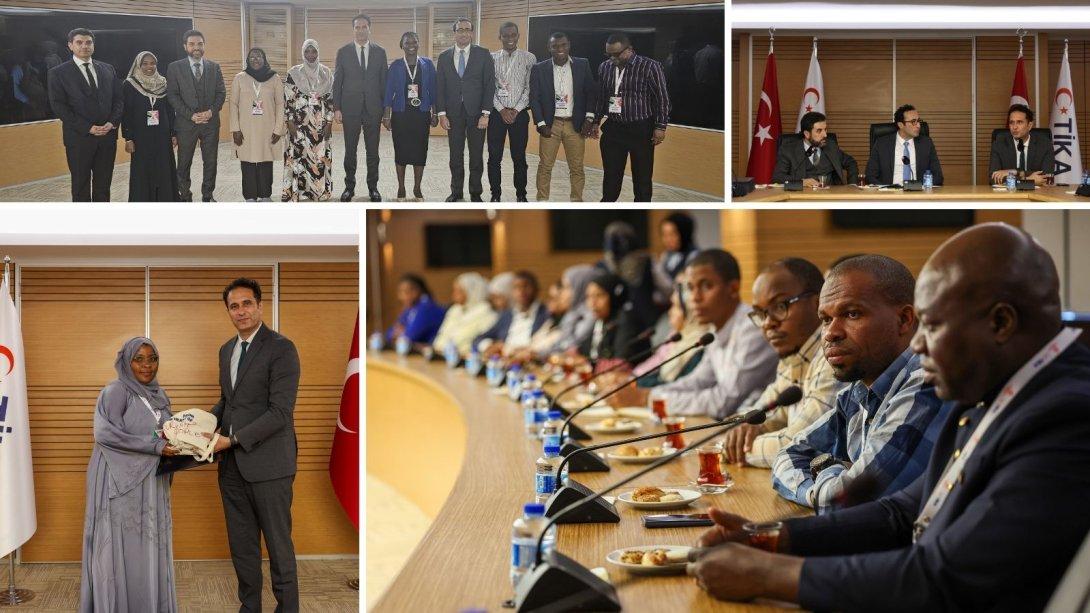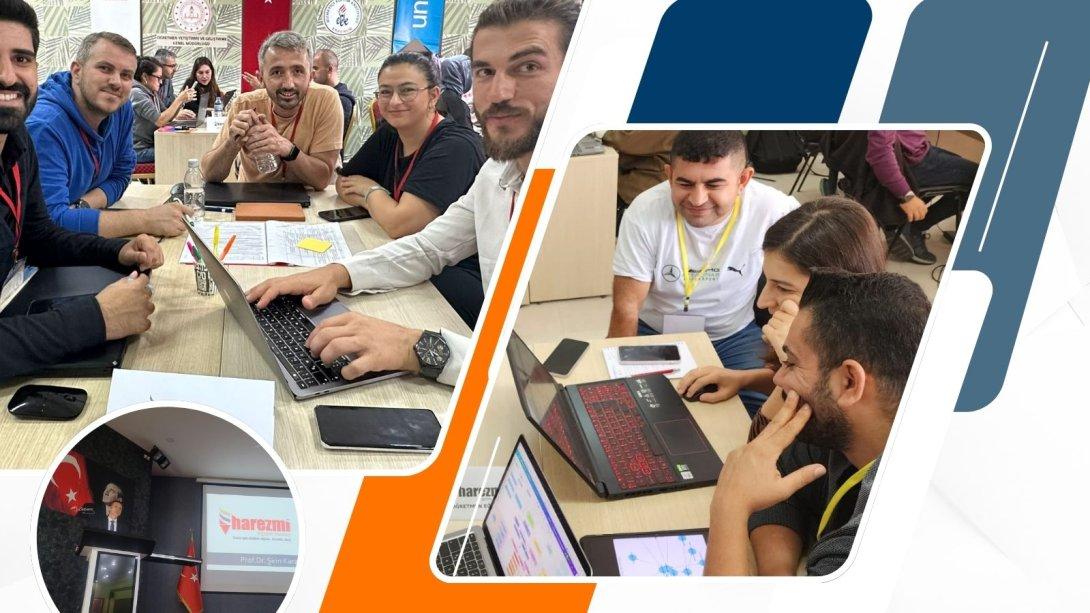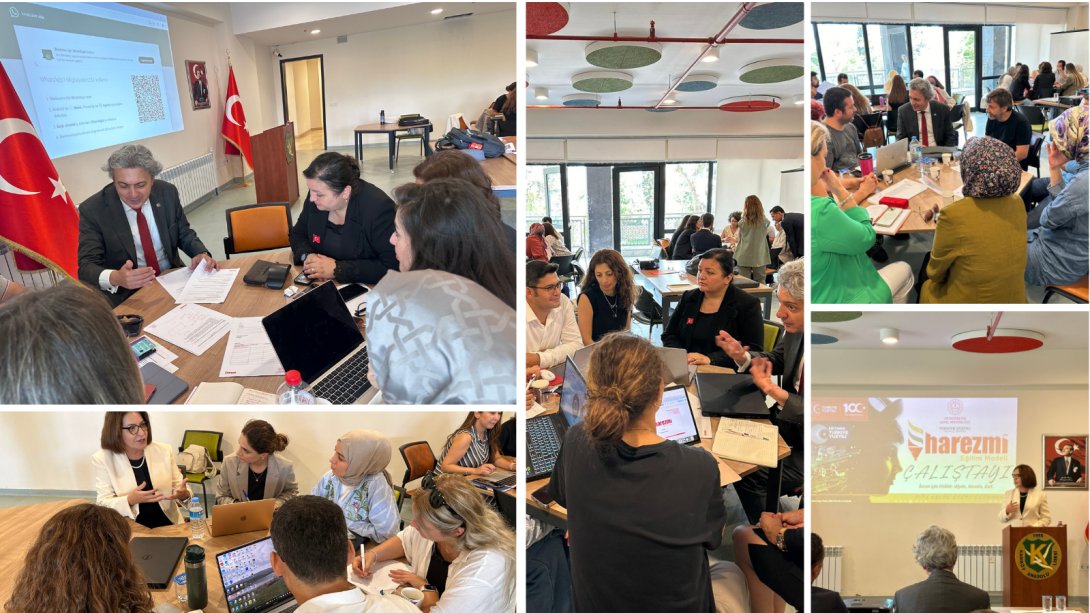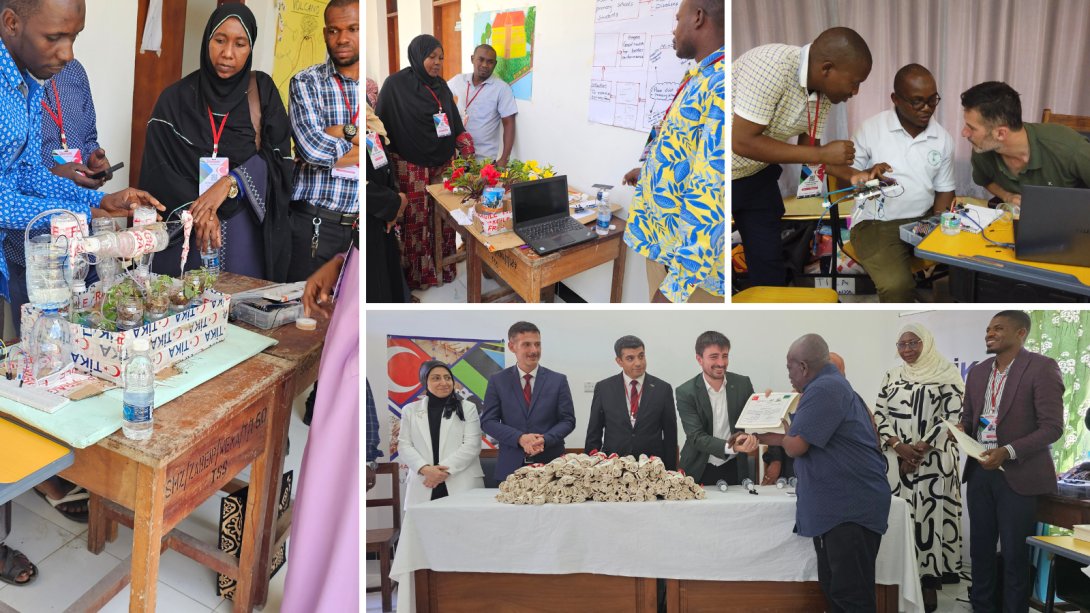

TANZANIA/ZANZIBAR HAREZMI EDUCATION MODEL COMPLETED WITH CERTIFICATION CEREMONY
The Harezmi Education Model Leader Teacher Training, organized in cooperation with the Ministry of National Education and TIKA, ended with the certificate ceremony held at TIKA.

HAREZMI EDUCATION MODEL TEACHER TRAINER TRAINING WAS SUCCESSFULLY COMPLETED IN ERZURUM
The Harezmi Education Model Teacher/Trainer Training Courses held at the Erzurum In-Service Training Institute between September 23-27, 2024 were successfully completed. A total of 220 teachers from different provinces of Turkey participated in the training.

TEACHER AND TRAINER TRAINING PROGRAM
In order to disseminate the Harezmi Education Model throughout Türkiye, teacher and trainer trainings are organized at Istanbul Zübeyde Hanım In-Service Training Institute between 16-20 September 2024. 130 teachers from 43 different provinces participated in the training.

HAREZMI EDUCATION MODEL CONTENT AND MATERIAL PREPARATION WORKSHOP STARTED IN ISTANBUL
Harezmi Education Model Content and Material Preparation Workshop, organized by our General Directorate at Istanbul Kadıköy Anatolian High School, was held on Monday, September 9, 2024, with our teachers from 81 provinces, our General Directorate's Department Head Selman KÜÇÜK and Harezmi Education Model Scientific Board Chairman Prof. Dr. Şirin KARADENİZ.

THE SECOND HAREZMI EDUCATION MODEL TEACHER TRAINING HAS BEEN SUCCESSFULLY COMPLETED IN TANZANIA
82 teachers attended the training held in the Zanzibar Autonomous Region of Tanzania within the scope of the Education and Training Support Program (EOP) carried out by the Educational Projects Coordination Office within the Department of Foreign Relations and Partnerships of TİKA.

HAREZMİ EDUCATION MODEL
Harezmi Education Model is an education model where teachers plan the process with an interdisciplinary approach, and children identify real-life problems based on data, generate ideas for solutions, and create designs.
By contributing to teachers' professional development, the correct and effective use of technological tools by both teachers and students, and the development of algorithmic thinking and problem-solving skills, it directly and qualitatively influences other educational processes. In this sense, it serves as a general education model.
The key elements of the Harezmi Education Model are its interdisciplinary approach, real-life problems, and the quality of teaching tools chosen to solve these problems. The model integrates computer sciences with science and mathematics, social sciences, arts-design, and sports sciences, adapting computational thinking skills to real life. It emphasizes the effective use of programming and teaching tools and reinterprets the interdisciplinary approach by giving equal importance to different disciplines, promoting collaboration. The model is continuously updated and enriched through robotic and game design, allowing students to produce with enjoyment.
The aim of the Harezmi Education Model for students is to help them develop algorithmic, cognitive, metacognitive, socio-emotional, practical, and physical skills while collaboratively applying research and development methods to identify and provide innovative, effective solutions to life problems. The model aims to encourage students to become lifelong learners, raising awareness of the importance of using technology safely and ethically, and equipping them with the necessary competencies to use technology for production while adhering to moral values.
Harezmi Education Model for teachers and administrators is to support them in focusing on students' interests, skills, and learning needs. The model helps educators gain experience in designing, implementing, and evaluating learning processes through collaborative work, innovative technology integration, and interdisciplinary approaches. It also supports teachers in sharing the outcomes of these experiences in scientific and professional environments, contributing to their personal, research-development, and professional growth.
The model aims to contribute to the ecosystem at all educational levels by supporting every teacher and administrator's personal and professional development. It encourages them to apply the learning designs they create and to make sense of the processes and outcomes through a research-development mindset, fostering collaborative work and experience-sharing across all levels of education.Stakeholders (parents, school environment, scientists, public institutions, NGOs, experts, etc.), the Harezmi Education Model strives to make them more effective participants in the learning process. It does so by having them contribute their expertise and support in solving real-life problems identified by students, teachers, and educational leaders. The model also aims to involve stakeholders by collecting their feedback, sharing data related to the process with scientists and experts, supporting the production of scientific publications about the model, and ensuring that these publications are reviewed and evaluated. Through this, all stakeholders can participate in the development, improvement, and updating of the model.
Principles of the Model:
The Harezmi Education Model is structured around four principles for individual development and meaningful learning:
Disciplines (Computer Sciences; Science and Mathematics, Social Sciences, Arts and Design, and Sports Sciences) are equally planned, implemented, and evaluated through an interdisciplinary approach.
Real-life problems are identified by students based on data, with guidance from teachers, considering local, national, and global scales.
Teaching tools chosen to solve real-life problems (such as unplugged activities, block-based or text-based programming, robotics, games, artificial intelligence programming, etc.) are employed.
The process is guided by research and development methods.
In addition to helping children discover how they can use technology for production, the Harezmi Education Model is designed in a way that allows students to evaluate and update their process with their teachers while adhering to safety, ethical, and moral values, utilizing scientific research methods. It is a process where students identify daily, real-life problems, design algorithms to solve them, and step by step, determine how to address the issue, using the power of programming to generate innovative ideas.
The foundation of the model initially consisted of five main pillars. It integrates computer science education with social sciences, adapting computational thinking skills to real life, using programming and teaching tools effectively, reinterpreting the interdisciplinary approach with an equal emphasis on different disciplines, and embracing collaboration. Through robotic and game design, the model promotes enjoyable production, continuously updating itself based on the scientific evaluation of the outputs.
In October 22-23, 2016, with the support of the Ministry of National Education's Directorate General of Innovation and Educational Technologies, a "From Mind to Machine: Computer Sciences and Interdisciplinary Education Workshop" was held in Istanbul, organized by the Istanbul Provincial Directorate of National Education, with the participation of an academic board and teachers.
The workshop identified the following needs:
Relating computer sciences to other sciences;
Teaching computational thinking skills for unplugged computer science education;
Teaching programming languages focused on thinking skills;
Enhancing skill-based teaching methods.
The first pilot implementation of the Harezmi Education Model was conducted in 2017 within the Istanbul Provincial Directorate of National Education. In this process, the program was carried out for 2 hours a week in five pilot schools of different levels and types, with five or six teachers participating in the same class. As a result of the first pilot implementation, it was observed that students learned more permanently and enjoyably through hands-on, practical experiences. The active learning methods used in the model helped students discover learning outcomes and targets focused on practical applications.Additionally, feedback from teachers, parents, and students showed that the combined teaching of subjects such as Science, Mathematics, History, Turkish, and Information Technologies with teachers' collaboration allowed students to compare new information and transfer learned knowledge to real life more easily.
After the pilot implementation in Istanbul, the Harezmi Education Model was expanded to 50 schools in 38 districts of Istanbul. In the 2017-2018 academic year, 258 teachers who completed the in-service "Harezmi Teacher Training" received their "Harezmi Teacher" certificates and began their work.
On November 13, 2017, the second pilot implementation of Harezmi classes began. During the first four weeks in all schools, a process was planned in which students and teachers collaboratively identified "Real-Life Problems (HIS)." After the fourth week, all schools identified their real-life problems and moved on to the lesson design process. Believing in the goal of raising a generation that produces rather than consumes, the then-Undersecretary of the Ministry of National Education, Mr. Yusuf Tekin, expressed his confidence in the Harezmi Education Model with the words, "We want children to feel that they can use theoretical knowledge in real life, that it is useful to them. This project is doing something very different. Children at primary school age identify problems," and ordered its implementation in at least 10 more provinces.
In the 2023-2024 academic year, the Harezmi Education Model continues its expansion with 465 Harezmi teachers across 27 provinces in Turkey. The model is re-evaluated and updated annually and has been implemented in various provinces and countries. In the academic literature, there are doctoral dissertations (Çimen, 2022; Tokmak, 2022), master's theses (Seçer, 2021; Yavuz, 2023), articles (Koçoğlu, 2018; Altınöz et al., 2019; Ceylan et al., 2020; Çimen & Gülseçen, 2022; Çimşir et al., 2022; Tokmak et al., 2022; 2023), and conference papers (Altınöz et al., 2017; Uçan, 2019; Yavuz et al., 2019) related to the Harezmi Education Model.